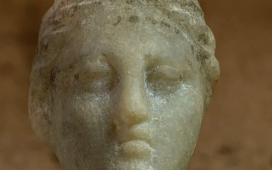[ad_1]
A girl on a farm is devoured by pigs. A walker’s throat is slit by the broken-off blade of a lawn mower after it hits a stone. A woman fires 13 bullets into the body of her seemingly sleeping father but is cleared of murder because he had died of an aneurysm three hours earlier.
Miniature tragedies like these cram the pages of the books of the Belgian forensic pathologist Philippe Boxho, and explain why his bestsellers are at numbers one, two and three of France’s nonfiction charts: they are macabre but also darkly comic and, above all, true.
“If I was writing a novel, I would be beholden to what is imaginable,” the medical examiner turned publishing sensation told the Guardian. “But I write about things that really happened, and sometimes the truth is absolutely unimaginable.”
His trilogy, published at a rate of a book a year and fast approaching the combined 1m copies sold mark, includes detailed medical descriptions of how Boxho cuts open and examines the dead bodies to investigate what happened to them, how corpses can either putrefy, mummify or “saponify” (when the corpse turns into a soap-like substance) if left untouched for too long, and how flies and maggots can help date their demise.
The first volume, Les Morts Ont La Parole (What The Dead Have To Say), came with a health warning: “Sensitive souls should abstain.” Yet Boxho said titillation was never at the forefront of his mind. A veteran pathologist who has carried out more than 2,500 autopsies, the 59-year-old from Liège was motivated to write about the reality of his workday routine because he believed his profession was “widely misunderstood”.
A large part of the books is taken up by correcting myths created by popular TV series such as CSI or Silent Witness. A single hair found at the crime scene can advance an investigation but rarely solves the case. “I’ve only known three such cases in 30 years,” he writes. Fingerprints are mostly useless, especially in countries without a comprehensive database such as Belgium and France. Forensic pathologists are not as glamorous as they are often portrayed. They are rarely smartly dressed and they wear protective clothing that makes them look “like the Michelin man”.
Boxho said his profession was chronically underfunded: over the last 20 years, the number of people doing his job has halved, and Belgium carries out autopsies on only 0.2% of its dead, below the European average. “My thinking was that if I can explain what people like I actually do, it can help gather political support for my profession,” he said.
Approached by the publisher Kennes after doing a podcast for the French-language Belgian broadcaster RTBF, he was initially short on confidence. “I always told stories to my students, but I wasn’t sure I could write,” he said.
He decided some creative licence was necessary, so the cases he wrote about did not read like police reports, and he fictionalised some of the context so as not to reveal the identities of the dead. To anonymise the victims and perpetrators he has used the names of his friends. “But the basic facts and the resolution of each case is always true.”
Also true is the story of the man who was so determined to take his own life that he tried in two ways at once: hanging himself and shooting himself in the head. The shot misfired and severed the rope around his neck. Unbalanced by the recoil, the man fell to the ground head first – and died of a skull fracture.
The first book was published in 2022 with a modest initial print run of 5,000 copies. It has since sold more than 270,000.
after newsletter promotion
For this August’s release of the third volume, La Mort en Face (Facing Death), a bookshop in Charleroi opened from midnight to 6.30am, and a thousand people queued up for a signing session. Translations into 20 languages have been commissioned, with three publishers bidding to publish it in the UK.
Boxho named three factors that could explain the popularity of his books: “People love true stories, that these stories are quite short, and that I tell them with a sense of humour. Death isn’t necessarily always sad.” He said humour and a degree of cynicism were coping strategies vital to his profession.
Before opting for a career in medicine, Boxho had dreamed of becoming a priest. But he has not looked back since. “If you’re a pathologist and you keep fainting when you see dead people, you should probably change jobs,” he said. “When I see a dead body, I think: oh, how appealing. I am a bit special like that.”
[ad_2]
READ SOURCE













